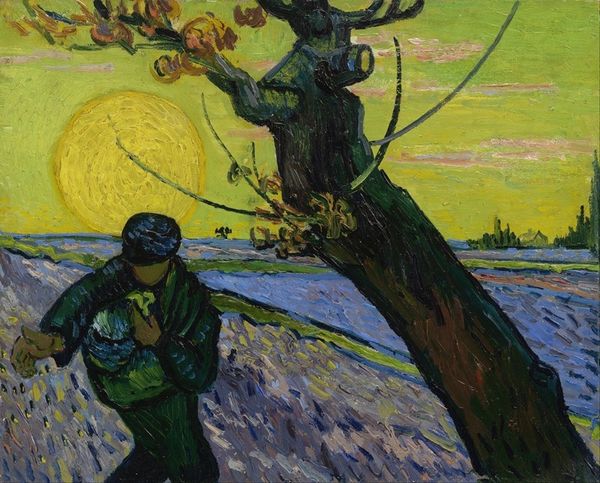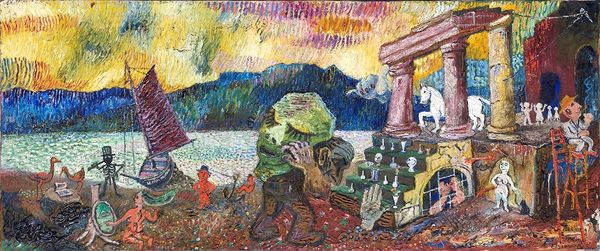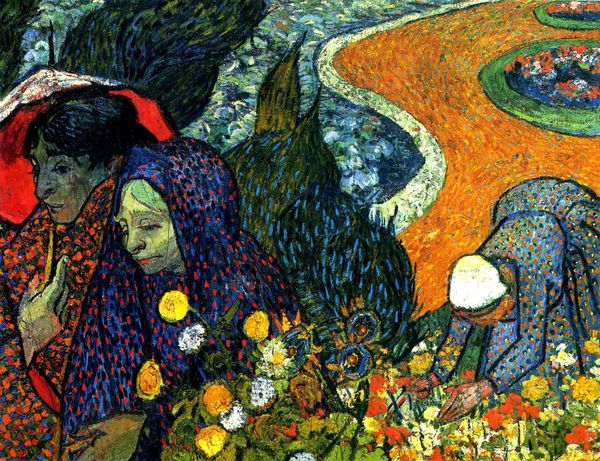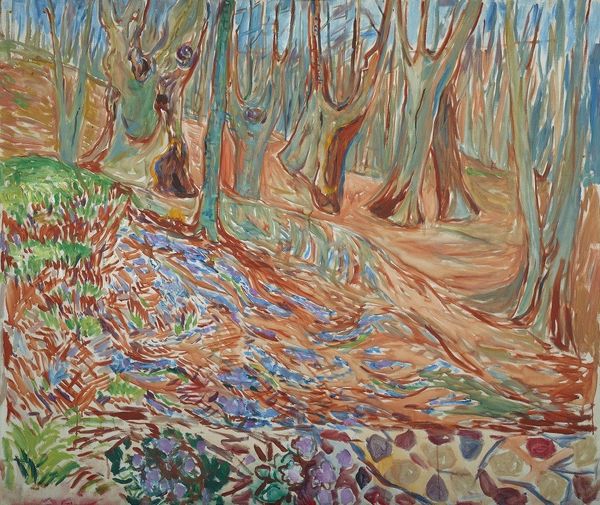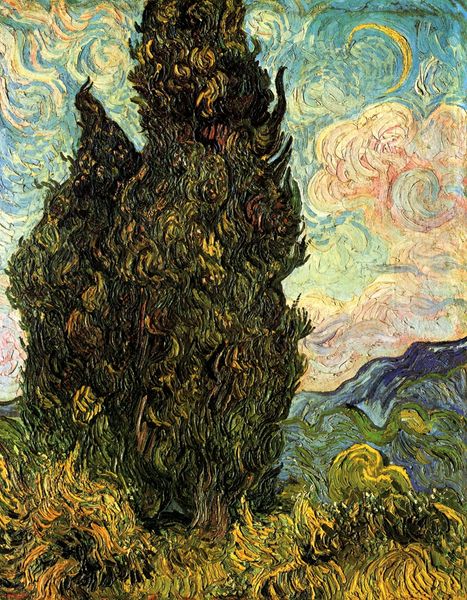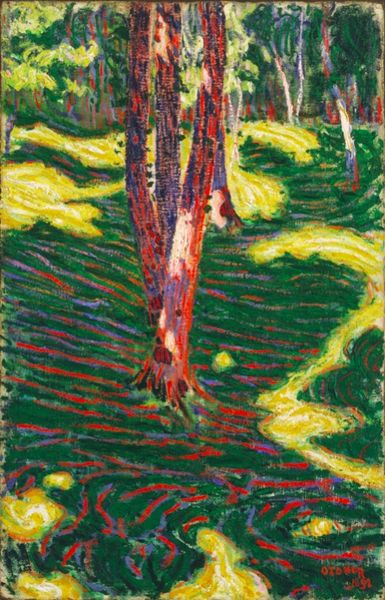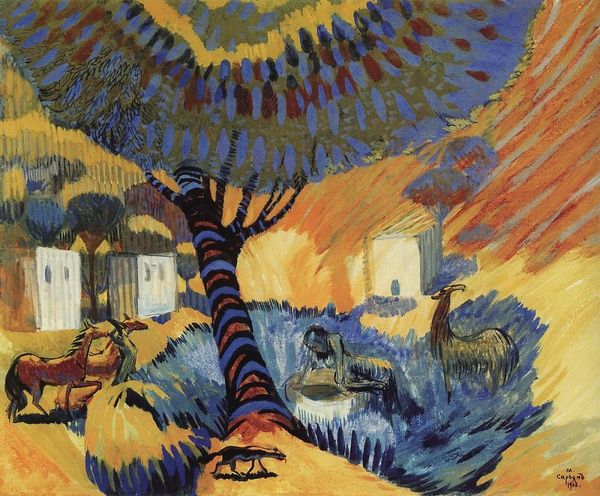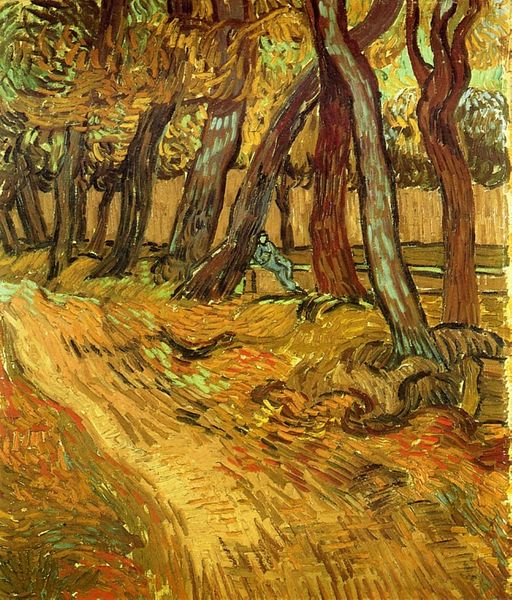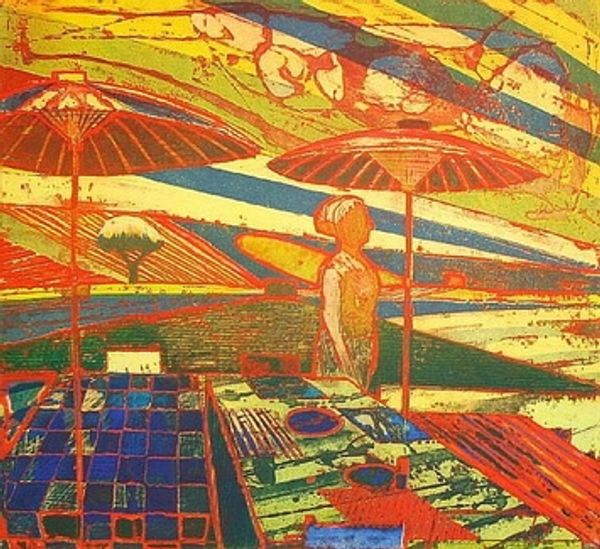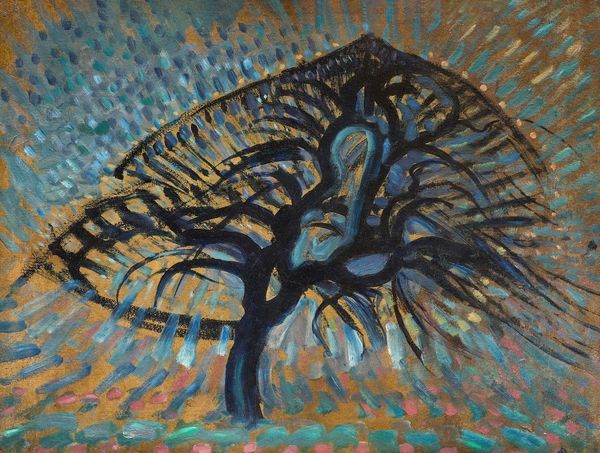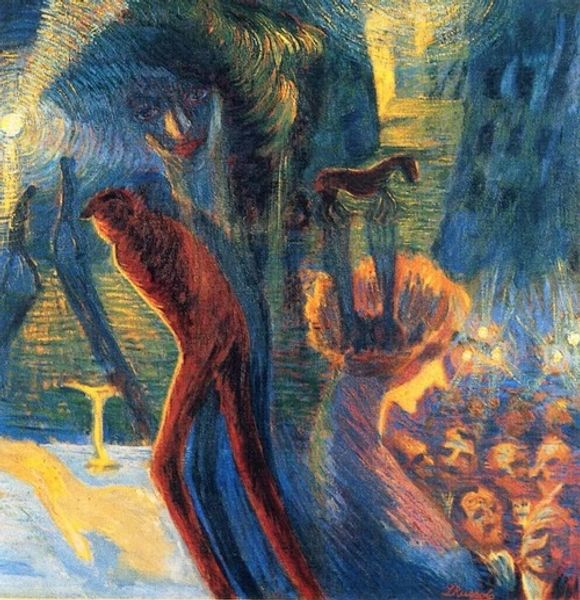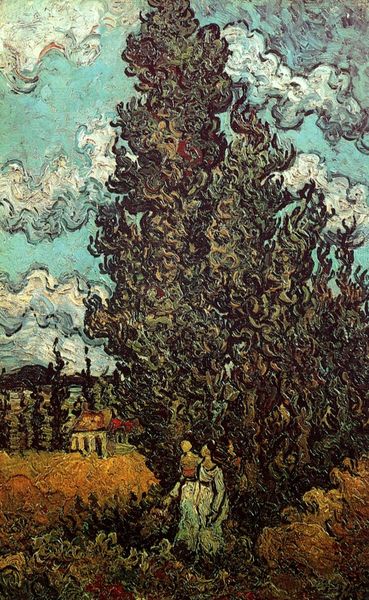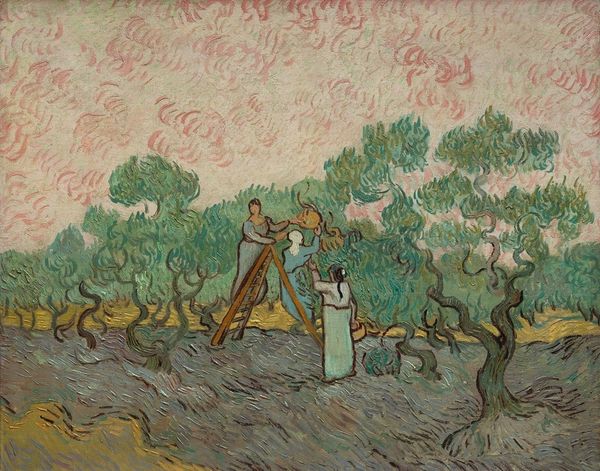
painting, plein-air, oil-paint
#
tree
#
narrative-art
#
fantasy art
#
painting
#
plein-air
#
oil-paint
#
landscape
#
figuration
#
vanitas
#
symbolism
#
post-impressionism
Dimensions: 73.5 x 92 cm
Copyright: Public domain
Curator: Here we have Van Gogh's "Sower" from 1888, currently residing at the E.G. Bührle Foundation in Zürich. It's a piece brimming with symbolism, typical of his Post-Impressionist period. Editor: Immediately, what strikes me is the heavy impasto, particularly on that massive sun and tree trunk. You can almost feel the weight of the oil paint, the density of the application—it really emphasizes the physicality of labor, both in the field and in the act of creating the artwork. Curator: Precisely! This painting arose during Van Gogh’s time in Arles, reflecting his fascination with rural labor. But it’s not just about depicting a farmer; it engages with the romanticized vision of the worker prevalent at the time and his role as an agent. Note the figure’s imposing presence, set against the vast field and sky—it certainly invites you to reconsider the peasant worker, and consider the narratives surrounding this figure, which can verge of romanticizing it. Editor: I agree. And look at how Van Gogh has treated the material. The thickly applied brushstrokes become almost sculptural. It speaks to the laborious, repetitive nature of the sower's task but also highlights the artist’s own physical engagement with the canvas. It suggests an equivalence between artistic and agricultural labor, almost suggesting the "making" quality in working on raw land. Curator: Indeed, and beyond labor, the sower motif holds significant symbolic weight. The sower is sowing seeds in the land which become an idea or vision coming to life through action. This act also represented life, death, and rebirth, and echoes back through centuries of agrarian allegories. Van Gogh would've been fully aware of these implications. In a time of industrialization and the fading old social structures and old class positions, here is this man continuing an act with its own kind of meaning making. Editor: Absolutely. And, from a material perspective, you’re seeing the convergence of labor, material transformation, and meaning. Seeds go into soil which has been reworked. Oil paints become texture on a canvas that then suggests land, and work in an image to be consumed. Even though it can look like a quick depiction done outdoors "en plein air," it feels loaded with reflection. It also adds an aesthetic weight—the social act of the harvest being "shown" and offered to viewers to be understood and purchased within art spaces. Curator: It certainly encapsulates complex dialogues on labor, both physical and artistic, in the late 19th century. A thought provoking piece that showcases some difficult, complex conditions to be faced while trying to become successful. Editor: I agree. The physicality of this oil-painted sower gives visual and aesthetic significance to his act, beyond just presenting a scene.
Comments
No comments
Be the first to comment and join the conversation on the ultimate creative platform.
